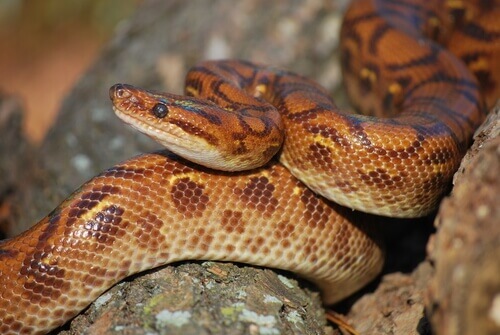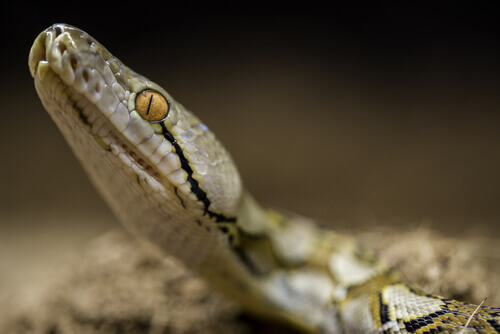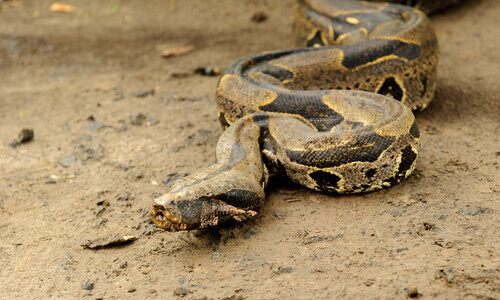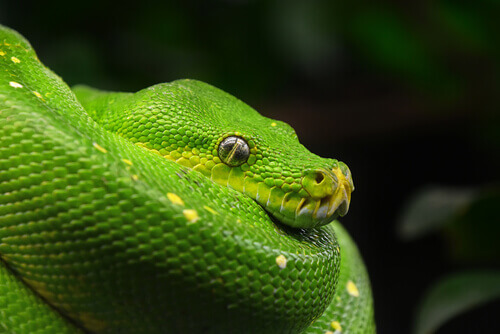5 Constrictor Snakes You Don't Want to Meet

Very large, and with the ability to strangle their prey, constrictor snakes are usually not poisonous and can eat whole animals due to their ‘unsettled’ jaws that open in an amazing way. Learn more about them below.
Examples of snake constrictors
Constriction is one of the most amazing techniques in the animal kingdom. It consists of the strangulation of the victim once the predator has wrapped himself around it. It’s not a matter of breaking bones or crushing them, but of preventing them from breathing.
Therefore, the prey dies of suffocation. Some constricting snakes that carry out this mechanism in order to feed are the following:
1. Green anaconda
This South American endemic reptile, which appears in the cover photo of this article, is the largest and heaviest in the world. Although there’s documentation of many cases of attack on human beings, it only acts that way if it feels threatened.
It’s dark green with oval brown markings, has a lighter belly, and the pattern of the tail is unique to each specimen. Scales cover the snout and both the nose and eyes are ‘raised’ to be able to submerge the whole body except that part in the water and stalk their prey. These include tapirs, capybaras, deer, rodents, fish, amphibians, coatis, and reptiles.
2. Rainbow boa
There are different species of rainbow boas, and they all live in South America, more precisely in the warm regions. Their scales can be of various colors, always with a light or brown background and patterns of different tones, hence their name.

3. Reticulated python
Next on our list of constrictor snakes is the reticulated python, which lives in Southeast Asia. It ‘competes’ with the anaconda over which is the biggest in the world. They usually measure about 16 and a half feet, which is quite considerable. However, there are records of specimens measuring 26 feet long and weighing almost 300 pounds.

It feeds on rodents, birds, reptiles, monkeys, wild boars, turkeys, and deer. It’s very agile and fast, has nocturnal habits and can climb trees to hunt.
4. Boa constrictor
This is one of the best-known constrictor snakes, native to the Americas -from Mexico to Argentina- and prefers habitats with little water, such as savannahs and deserts. It’s an arboreal snake, and sometimes spends some on the ground.

The boa constrictor can measure up to 13 feetvery attractive coloration
These constrictor snakes don’t see very well, so they use their thermosensitive scales to detect prey: birds, lizards, bats, rats, opossums, and squirrels. They’re solitary and nocturnal, and hide among tree branches.
5. Green tree python
This species of constricting snake lives in the forests of Australia, the Solomon Islands, and Papua New Guinea. And, as its name suggests, it has green skin which is quite bright and striking, with lighter areas on the belly.

It can measure 8 feet
https://myanimals.com/es/5-serpientes-constrictoras/
This text is provided for informational purposes only and does not replace consultation with a professional. If in doubt, consult your specialist.